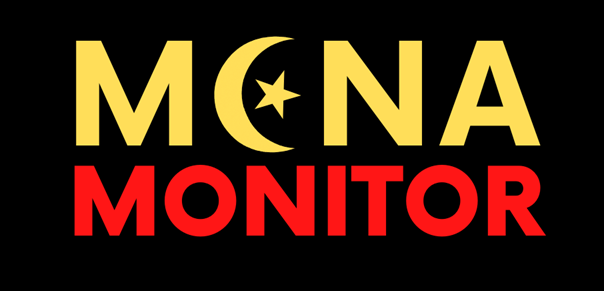Date: 26 November 2024, Author: Paulina Natalia Jarocińska
Between East and West: How disinformation shapes Hungary’s public opinion
Although the Russian disinformation machine has been operating for a long time, since the beginning of the war in Ukraine in 2022, Hungary has emerged as a focal point for disinformation campaigns to an even greater extent.

In the studies of many scientists, it is reflected that the V4 region is particularly ‘vulnerable’ and ‘receptive’ to disinformation, other propaganda tools or hybrid attacks. Despite being a member of both the European Union and NATO, it has taken a unique approach, particularly evident in its continued reliance on Russia for energy-related matters. This unique position has made the country particularly exposed to foreign influence operations aimed at shaping public opinion.
The V4 countries are particularly vulnerable to Russian disinformation due to historical ties to the Soviet Union, past energy dependency on Russia, and their strategic geopolitical position as a buffer between the West and Russia. Socioeconomic challenges, such as rising energy prices and public dissatisfaction, combined with varying levels of media independence, create fertile ground for manipulation. Russian narratives often exploit ethnic and nationalist tensions, as well as limited public media literacy, to sow divisions and undermine trust in EU and NATO policies [1]. Addressing these vulnerabilities requires stronger regional cooperation, investments in media literacy, and coordinated efforts to counter disinformation campaigns.
Although Hungary is a primary target of troll activity within the EU, surprisingly, it remains difficult to assess the scope and impact of Russian disinformation in the country. Social media platforms are often inundated with narratives aligned with Russian interests, yet concrete measurements of their influence are lacking. Notably, RT, the Russian state-controlled media network, initially planned to establish an office in Budapest but ultimately abandoned the idea [2].
Éva Bognár who is a researcher at the Democracy Institute at the Central European University states that Russian propaganda has been present in Hungarian society for a long time, but the Russian-Ukrainian war has significantly deepened the problem. A key and serious question is why the media spreads Russian propaganda and why the scope of disinformation is so huge. It includes claims disputing Ukraine’s territorial integrity, asserting Russia’s supposed right to control occupied regions, and promoting conspiracy theories that the political elite in Ukraine is controlled by individuals from the West [3]. Such disinformation aims to deepen divisions within Hungarian society, sow distrust in Western alliances, and bolster pro-Russian sentiments. The prevalence of these narratives highlights the vulnerability of Hungary’s digital space to foreign influence operations.
In March 2022, Hungarian public media launched a fact-checking and monitoring platform aimed at countering disinformation. This platform analyzes media content, identifies false information, and provides verified data to the public. As part of efforts to combat Russian disinformation, Hungary collaborates with international partners, participates in European Union initiatives, and conducts educational campaigns to raise public awareness about the dangers of disinformation [4].
Ukraine and its government are often portrayed as tools of the United States. Additionally, there is a uniquely perspective focusing on the alleged mistreatment of the Hungarian minority in Ukraine. Claims that ethnic Hungarians are being forced to fight in a war that is not theirs resonate strongly in public discourse. The West, along with Hungary’s opposition parties, is depicted as exacerbating the conflict. A related narrative accused Ukrainian President Volodymyr Zelenskyy of attempting to meddle in the 2022 Hungarian elections by criticizing Hungarian government’s stance. These narratives significantly shaped public opinion, with 46% of Hungarians believing in April 2022 that Ukrainian nationalists were constantly threatening the safety of Hungarians in Transcarpathia [5].
According to a 2022 study conducted by Political Capital, shared by Telex.hu, approximately 37% of Hungarians believe that Ukraine has committed acts of genocide against its Russian minority, and 28% accept the claim that the United States is operating secret biological weapons laboratories on Ukrainian soil. Additionally, 20% subscribe to the repeatedly debunked Russian disinformation that dead civilians found in Bucha and other settlements in Ukraine were killed by the Ukrainian military to falsely accuse Russia of mass murder [6]. Another study from 2022 found that a significant portion of the Hungarian public was unaware that Hungary had approved all eight EU sanctions packages against Russia. This lack of awareness was attributed to widespread public confusion, with 36% of Hungarians believing that their country had not supported these measures [7].
Other recent examples of disinformation is Hungary include reports that Ukraine is allegedly using banned chemicals on the battlefield, a claim originating from Russia’s state-run RIA Novosti [8]. Additionally, after Viktor Orbán’s visit to Moscow, Magyar Nemzet published an article discussing a missile strike on a children’s hospital in Kyiv. While briefly mentioning Ukraine’s accusation that Russia was responsible, the piece primarily focused on arguments, supported by Russian officials and propagandists, suggesting that the missile was likely a Patriot system malfunction [9].
Russian disinformation remains a significant challenge in Hungary, particularly in shaping narratives around energy security, the war in Ukraine, and EU policies. These campaigns aim to create confusion, undermine trust in European unity, and amplify social and political divisions. Despite these efforts, steps are being taken to counter such disinformation, including fact-checking initiatives, public awareness campaigns, and international cooperation within the EU and NATO. Strengthening media literacy and promoting transparent communication will be essential in building resilience to hybrid threats and ensuring the integrity of public discourse.
About Author:
Jarocińska Paulina Natalia is a doctoral student at East China Normal University in Shanghai. Her core research interests revolve around the impact of social media on politics, populism, European integration and EU – China relations.
Bibliography:
- Bleyer-Simon, K. Disinformation landscape in Hungary. June 2023. https://www.disinfo.eu/wp-content/uploads/2023/06/20230521_HU_DisinfoFS.pdf
- Half of Fidesz voters believe government did not vote for sanctions Research summary. Political Capital. November 2022. https://politicalcapital.hu/pc-admin/source/documents/pc_ned_survey_summary_20221205.pdf.
- Itt a bizonyíték, Ukrajna tiltott vegyi anyagokkal gyilkol a fronton. July 9, 2024. https://www.origo.hu/nagyvilag/2024/07/orosz-ukran-haboru-vegyi-anyag-front-ukrajna-herszon
- Krekó, P. Csaba, M. Magyarországon is kéz a kézben jár a Covid-szkepticizmus és az oroszbarátság. June 29, 2022. https://telex.hu/belfold/2022/06/29/oroszbaratsag-oltasellenesseg-kutatas-political-capital.
- Krekó, P. The drivers of disinformation in Central and Eastern Europe and their utilization during the pandemic, GLOBSEC Policy Brief. 2020. https://www.globsec.org/sites/default/files/2020-06/Drivers-of-disinformation-in-Central-and-Eastern-Europe.pdf?__cf_chl_tk=Tuso9Hs5dQL9IXMayzDYd5y6gb5zk0Z_fb1Fg5P2Y_Y-1732548010-1.0.1.1-K5iUsOEHB1.UH_hYwkj3VcV.yJNXqTGMm7MvnyyWmRM
- Máté, V. The only way not to find Russian propaganda in Hungarian pro-government press is not to look for it. July 10, 2024. https://telex.hu/english/2024/07/10/the-only-way-not-to-find-russian-propaganda-in-hungarian-pro-government-press-is-not-to-look-for-it-2
- Mohos, M. A CEU kutatója: Nehéz szétválasztani a magyar kormány és az oroszok propagandáját. April 3, 2022. https://rtl.hu/valasztas-2022/2022/04/02/propaganda-magyar-orosz-kozmedia-ceu-szakerto-haboru-ukrajna.
- Mohos, M. A közmédia tényellenőrzője szerint szinte kizárólag Ukrajna és az ellenzék terjeszt álhíreket a háborúról. March 31, 2022. https://rtl.hu/valasztas-2022/2022/03/31/kozmedia-alhir-haboru-ellenzek-ukrajna-lakmusz.
- Szicherle, Patrik. Krekó, P. Disinformation in Hungary: From fabricated news to discriminatory legislation. Heinrich-Böll-Stiftung Brussels. European Union. June 7, 2021. https://eu.boell.org/en/2021/06/07/disinformation-hungary-fabricated-news-discriminatory-legislation
- Zoltán, K. Amerikai rakéta találhatta el a gyermekkórházat? Magyar Nemzet. July 9, 2024. https://magyarnemzet.hu/kulfold/2024/07/amerikai-raketa-talalhatta-el-a-gyermekkorhazat
______________________
The project is co-financed by the Governments of Czechia, Hungary, Poland and Slovakia through Visegrad Grants from International Visegrad Fund. The mission of the fund is to advance ideas for sustainable regional cooperation in Central Europe.

Support Us
If content prepared by Warsaw Institute team is useful for you, please support our actions. Donations from private persons are necessary for the continuation of our mission.
All texts published by the Warsaw Institute Foundation may be disseminated on the condition that their origin is credited. Images may not be used without permission.














